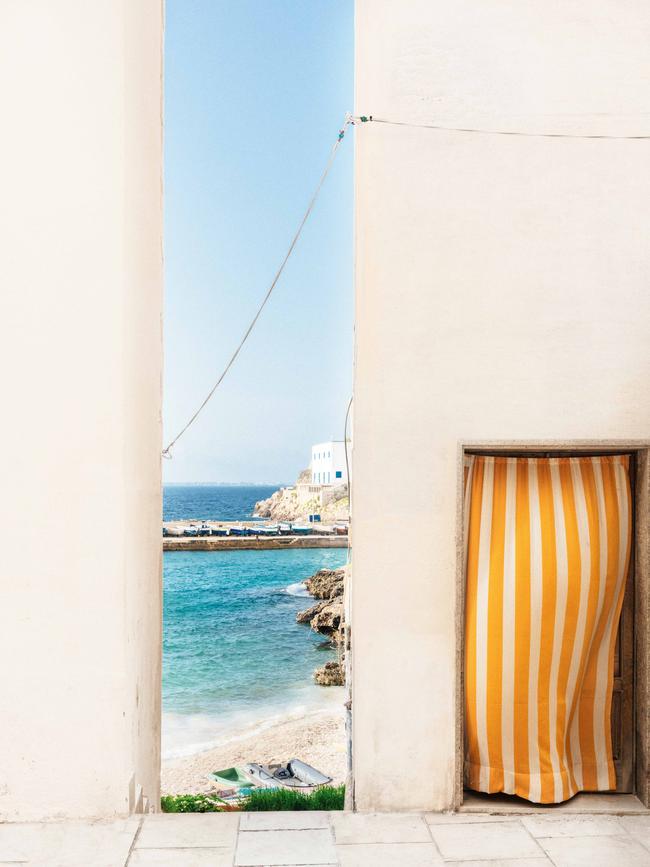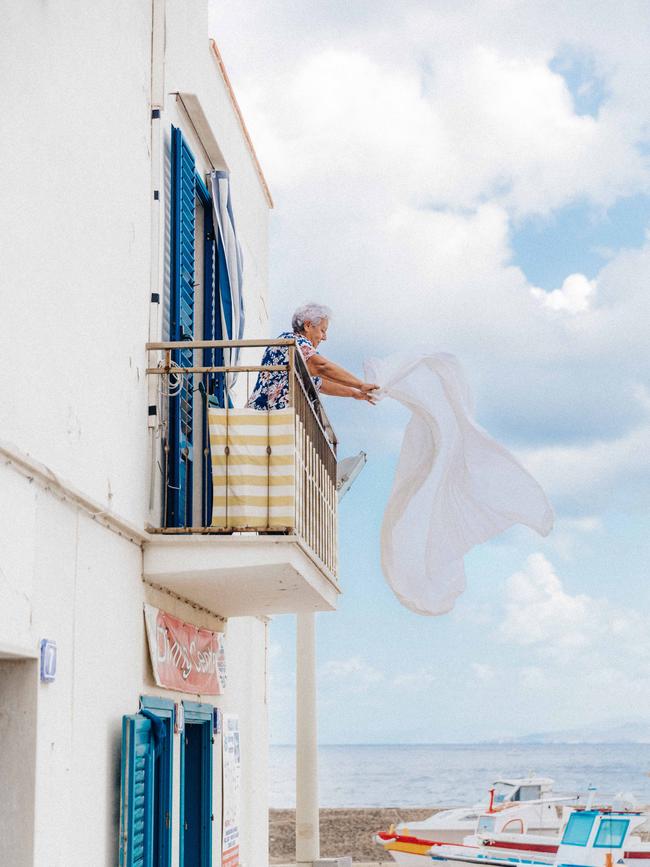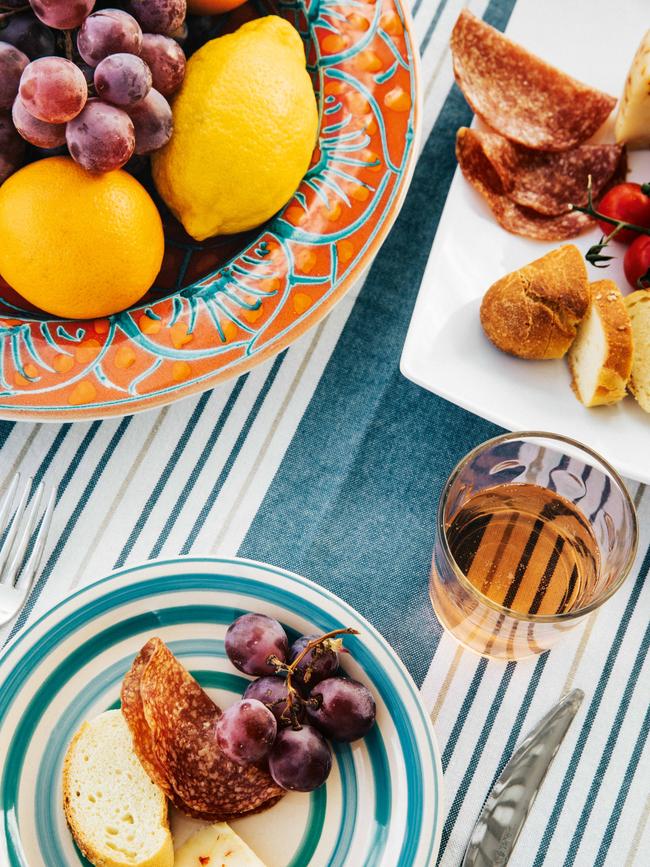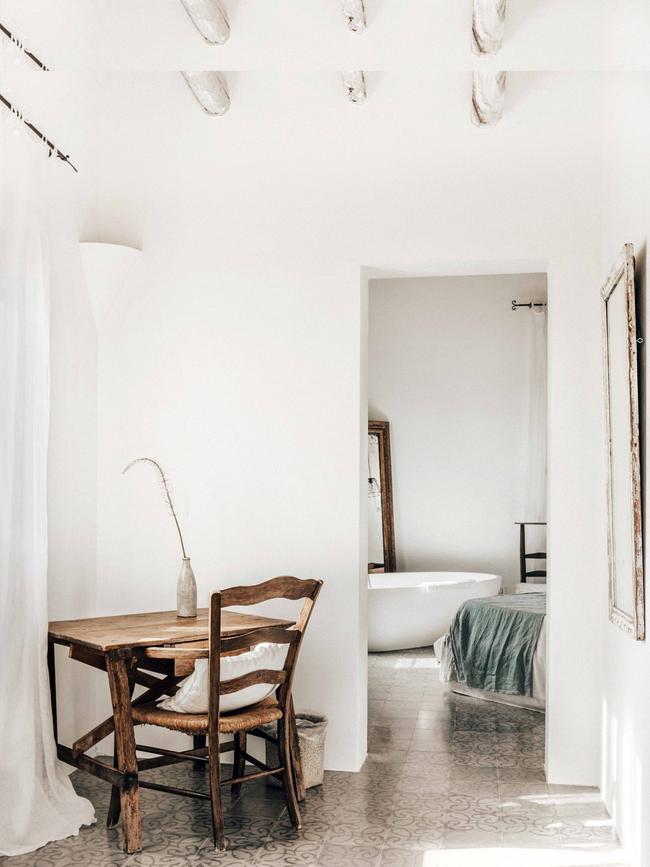Egadi Islands Italy
With mystical coves, twisting trails and a singular fishing history, Italy’s Egadi Islands are an oasis of untrammelled beauty.

Just off the western tip of Sicily, the glossy Italian island fantasy embodied by the likes of Capri and Panarea becomes raw and wild amid spawning bluefin tuna and African winds. Instead, the Egadi archipelago, composed of three main islands, Favignana, Levanzo and Marettimo, and two islets, is a feral landscape of phantasmagoric rock set in the chameleonic waters of Europe’s largest marine reserve. Under the surface, Neptune grass writhes like cilia, bringing up shipwrecked relics – Phoenician, Roman, Norman, Arab, Aragonese – that are so common the locals use them as paperweights. Bohemian Sicilians come here to hide out and reset: the Egadis are just 150 kilometres from Tunisia’s Cape Bon, and the closeness to somewhere so culturally distant from Europe makes them feel even farther from the Italian mainland.
But, as remote as the place feels, Favignana (the largest of the Egadis) is only a half-hour hydrofoil ride from the Sicilian city of Trapani. Through the cabin’s lace curtains, the island comes into view, its dromedary hump bearing the ruined fort of Santa Caterina like a saddle. “There are miracles in these waters,” says the old priest next to me as the boat eases into the inky blue. “There’s more beauty, more godliness here than in all the duomos in Italy.”
At the morning market, fishermen squint, roll-ups in their mouths, over the morning catch that gleams like antique silverware stolen on all-night missions aboard vessels named after their mothers. “What’s the one with the yellow stripes?” I ask. “Sarpa – dreamfish,” one of them grunts. “Eat it and you’ll see mermaids. You might even see Jesus Christ.” They all laugh. Nearby, a man named Angelo loiters behind his stall, looking biblical, selling delicate pendants of sea bream. Photographers who venture here for inspiration ask to take his picture. One shot him morphing into a fisherwoman for an exhibition. Angelo never leaves the island for long. Even when he goes to Trapani for the day, instinct calls him back like fish tugging on a line.

Until World War II, this was the tuna capital of the world. Bluefin were caught during the summer mattanza, or “killing”, an ancient fishing practice dating back to the Phoenicians. It was a brutal rite – the waters would turn red as hundreds of tuna were injured when captured in the nets – that bore the symmetry of poetry: the tonnaroti (tuna fishers) in woollen suits and black berretto hats solemnly rowing out as though to a funeral to the nets off Favignana. “We respected the cycle of life – let them spawn first. Ate every part of them,” says an old man in a baseball cap in Faviganganese dialect, with one bloodshot eye as if a faint memory of the slaughter.
But with the development of radar, commercial boats could intercept shoals before they reached the Mediterranean shallows to multiply. By the 1990s, Favignana’s waters had grown quiet and the tonnara warehouse became a museum. Today the last surviving tonnaroti are treated like retired boxing champions: lionhearted men who once engaged in one-to-one combat with a quarter ton of thrashing torso and tail. Clemente Ventrone, who’s in his seventies, roars into the port on his Harley-Davidson, with a ripped vest on a bronzed wrestler’s heft, Robert Plant curls over shy, deep-sea eyes. When he whistles, locals say, the fish come. On a chain around his neck hangs a shark’s tooth from the time he caught three. Inside the belly of one he found a dolphin.


I rent a motorbike and drive to half a dozen coves along the coast. Around me, agave stems jut out like the blackened masts of ghost galleons. Then come the sudden oases of homes, hibiscus rioting over the gates before fizzling out as quickly as fireworks. Walls drop 50 feet into quarries and rise again into cliff cathedrals, until I am lost in a complex riddle of stone. Further on, a man in aviators sears tuna inside a chrome food truck. I park at the top of Cala Rossa beach and inhale a swell of aromatics; somewhere in the scent, sea thyme and weeds. I hang my bike keys on a euphorbia bush where 10 other rings dangle and follow tanned Sicilian girls making the steep stumble down. There is no official path here, just bikinis and hiking boots, wild hair and instincts. Through a cleft, I can see a woman sunbathing on a stone platform below, a whale tattoo on her back, hair trailing into the water like a black squid.
The water shifts in colour with the drifting clouds, from the electric blue of dragonfly wings to the bruised hue of a prawn.
On the descent my sandals wobble over puckered stone until I find myself in an amphitheatre of rock with high, square caves; a white tent in one that a group of boys have risked their lives to reach. They fly a flag like a rebel faction. “E bellissima, no?” the whale woman shouts to me. “Like Sardinia in the 1960s.” As the sun falls, the water shifts in colour with the drifting clouds, from the electric blue of dragonfly wings to the silvery grey mackerel to the bruised hue of a prawn, as if undergoing a live chemical reaction. At sunset I search for the secret tunnel under the cliffs that leads to Zu Nillu, a house built inside an ancient tuff-stone quarry, then follow it until I am standing in the tangerine haze of a vast, sunken orchard. Apricots and quinces, mulberries and miniature pears. From a stone archway, Antonio, the housekeeper, materialises on a carpet of carob pods. A professorial man with the looks of Gregory Peck, he leads me deeper into quarries cut from walls as high as the Pyramids of Giza. Sometimes he comes down here to serenade the spirits with his guitar.

The next morning I take the boat to the island of Marettimo and Caffè Tramontana in the harbour, where a lobster pot swings from the ceiling. The sirocco, the warm wind that blows up from Libya, is coming. “Maybe tomorrow,” muses Rita, a dark, plump woman with a Roman nose, as though reading the news in the patterns of smoke she exhales. Here, talk circles endlessly around the wind. Some say that just before the sirocco hits, no islander can speak mainland Italian, only the local dialect. The words stick in their throats like fish spines. But outside all is calm in the pristine smile of the white cubed houses. The only sound is the goat-bell-like clink of boat rigs. A man with coarse, crimped hair passes, leaning stoically forward as though walking into an imaginary wind. The 300 permanent residents are split between sea and mountain people.
Some 25 kilometres from Favignana, Marettimo is the most vertiginous and mystical of the Egadis. First inhabited by religious sects, its eight square kilometres are swept with rare botanicals and honeycomb by caves. The island has been the site of countless sagas. The 19th-century novelist Samuel Butler explored here, later claiming that Marettimo was, in fact, the Ithaca of Homer’s Odyssey and that the epic was the vision of a Trapanese maiden with a fantastical eye for the many-headed beasts within people.


Dogs roam free here; doors are always open. A donkey ambles past, its coat as thick and russet as a mammoth’s. A woman in a beanie and sundress watches TV from a floral deckchair in the street. Three fishermen in glasses – all named Giuseppe – sit together mending a bundle of nets strung with chestnut-size floats like an elaborate sweater they’ve been crocheting for a hundred years. On saints’ days, all of Marettimo drag tables outside to eat together at night, the alleys lit by candles. In high season, locals rent out bedrooms. “The only big hotel here is the cemetery,” says Pietro, a chef and boatman who motors me to the east through denim-blue water. Cliffs rise 600 metres above us. “The Dolomites of the sea!” he shouts over the engine, before we arrive at a series of caves: The Pope’s Mitre, The Camel, The Pipe. Pietro points out Punta Libeccio lighthouse, to be leased to hotelier Lorenzo Malafarina on the encouragement of Franca Sozzani, the late editor of Vogue Italia. “They were going to build a luxury hotel,” Piero says. “But nothing ever happens. It took 30 years to get a petrol pump!” When I finally dive in, I feel vulnerable with 35 metres of water below me.
Sailing into Levanzo’s harbour, the sea remains moody, like water coming to the boil. Levanzo is the smallest of the three main islands, its 200 residents congregating at a restaurant called Arcobaleno, the only real gathering place. Today is the Festival of Pesce Povero, and the catch of the day is being finely chopped and skinned for lunch for the entire population to the sound of the coffee machine’s hissing pistons. Miuccia Prada stops by sometimes. She owns two villas here, separated by a stretch of water where divers fin down to a Roman wreck. A jovial archaeologist called Natale – meaning Christmas, though he was born in May – drives me to the top of Grotta del Genovese, a dark cave above which hundreds of mauve asphodels, the flowers of the underworld, dance down the hillside like the skeleton spirits of hyacinths.
We crunch down over stones and candied orange slices of lichen, then walk bent over in the darkness. When we stand again, we’re inside the mind of a caveman. “This is the work of a Neolithic artist,” Natale says, shining his torch on lizard-like stick figures. “These are from 12,000 years ago.” Back at Arcobaleno, a folk band with an accordionist is playing, as if conducting the waves. Everyone is here, balancing glasses of Falanghina wine and plates of sardine involtini. I sit next to Alberto, a dry-stone-waller and artist who makes intricate models of old shepherd’s houses from beachcombed bones and pebbles. The grandson of a lighthouse keeper, he maintains a lamp’s beam of space between himself and the modern world. “Sometimes I wonder if we are still Homo sapiens,” he says, barely audible. “Or if we’ve evolved into something else.” I catch the ferry back to Favignana, where Clemente takes me line-fishing on the eastern part of the island. “When you are down there with the innocent creatures, you are at peace,” he says. “Down there, they know nothing of us.”
Conde Nast Traveller



To join the conversation, please log in. Don't have an account? Register
Join the conversation, you are commenting as Logout